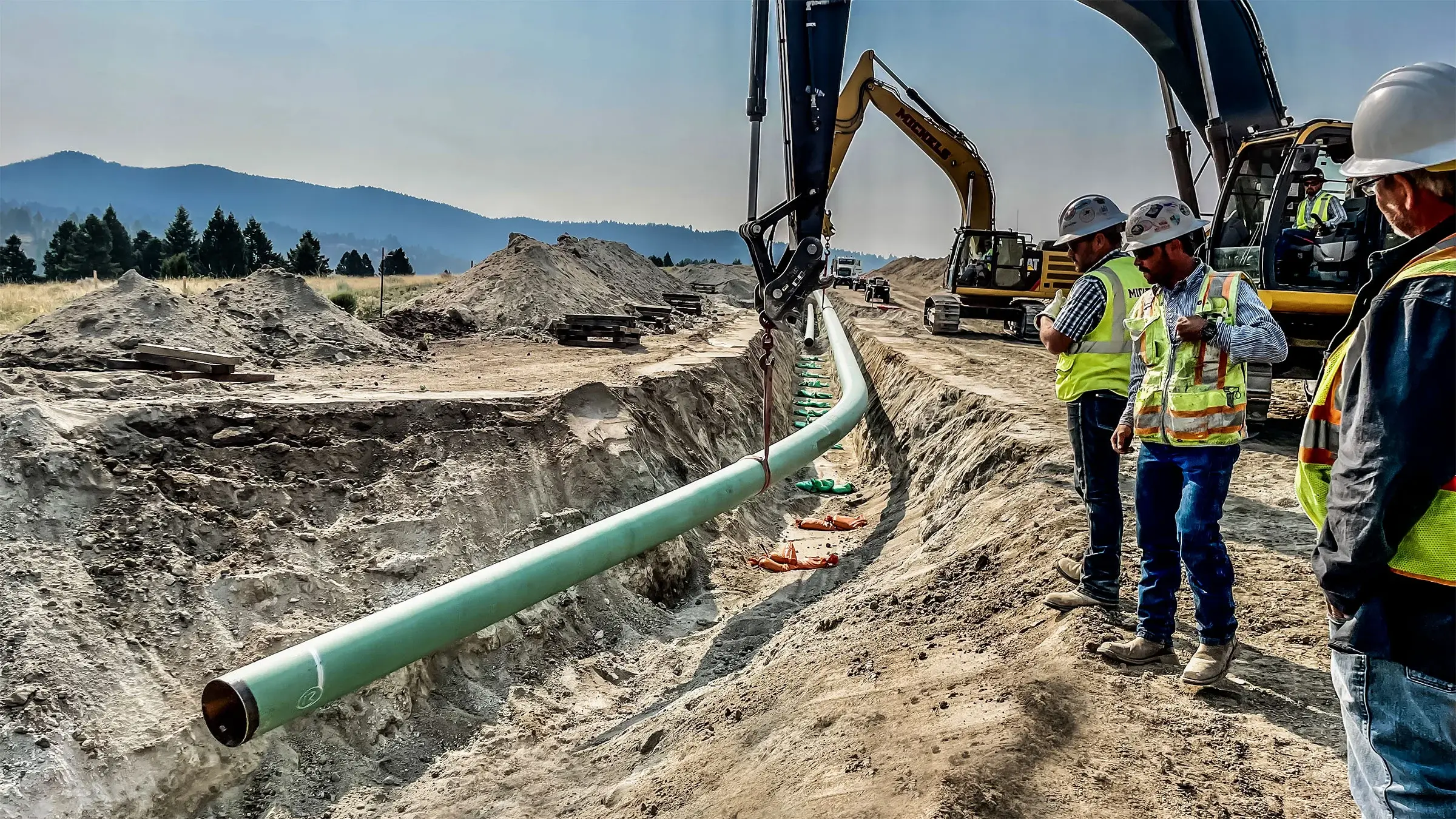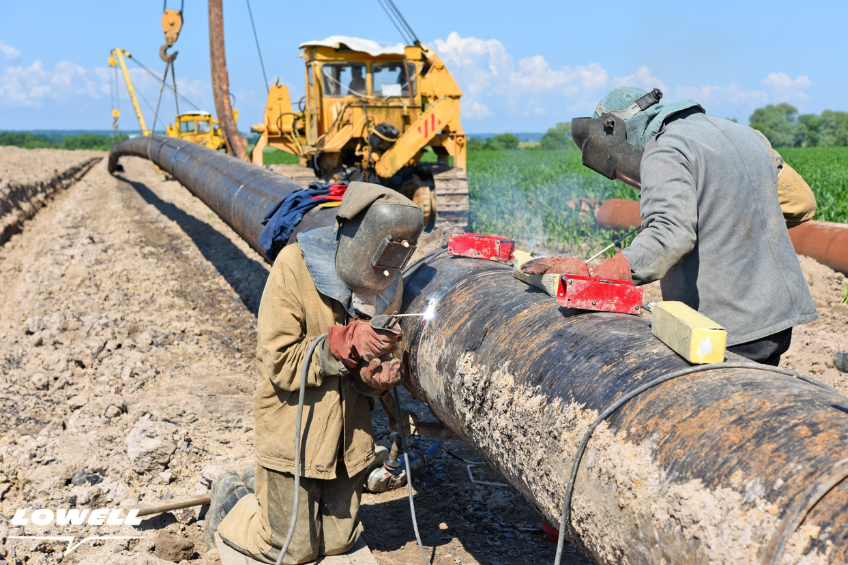Comprehending the Trick Features of Pipeline Providers and Their Impact on Effectiveness
Pipeline solutions play a vital function in numerous sectors, influencing operational effectiveness considerably. Key functions, such as advanced surveillance innovations and maintenance techniques, are important for minimizing downtime. Furthermore, regulative compliance warranties safety and environmental protection. Nonetheless, the interaction in between style, infrastructure, and economic variables can complicate these processes. Comprehending exactly how these aspects effect total effectiveness increases crucial concerns about best practices and future advancements in the area.
The Role of Modern Technology in Pipeline Tracking
As advancements in modern technology proceed to evolve, the importance of effective pipe surveillance has ended up being progressively noticeable. Modern pipe systems depend on sophisticated tracking tools that improve operational performance and security. Technologies such as real-time data analytics, sensing units, and drones provide drivers with immediate understandings right into pipe conditions, enabling them to identify leakages, rust, and other prospective problems before they rise into considerable issues.
Furthermore, the combination of Internet of Points (IoT) gadgets has actually changed conventional monitoring techniques, enabling for continuous surveillance and automated coverage. This proactive approach not only decreases risks however additionally maximizes maintenance routines and source appropriation. In addition, advanced software application systems assist in data visualization and analysis, encouraging decision-makers to react promptly to anomalies. Collectively, these technological developments not just enhance pipe integrity however also foster ecological stewardship by reducing the potential effect of leakages and spills.
Upkeep Methods for Boosted Effectiveness
Reliable upkeep strategies are important for enhancing pipeline performance. Carrying out anticipating maintenance strategies, adhering to regular inspection protocols, and establishing durable emergency reaction strategies can substantially enhance operational dependability. These strategies not only decrease downtime but also add to the general safety and security and honesty of pipe systems.
Anticipating Maintenance Strategies
Predictive maintenance methods are progressively acknowledged for their capability to improve functional efficiency in pipe solutions. By leveraging information analytics and monitoring technologies, these strategies allow drivers to prepare for devices failings prior to they happen. This positive technique decreases unplanned downtime, decreases upkeep costs, and prolongs the life expectancy of crucial assets. Sensors and IoT devices play a critical duty in accumulating real-time data, allowing for the analysis of devices wellness and performance patterns. Equipment understanding algorithms analyze this data to identify patterns and anticipate potential problems. Pipeline operators can schedule upkeep tasks throughout non-peak times, optimizing source appropriation and making certain continual procedure. Eventually, the fostering of predictive maintenance promotes a much more dependable and reliable pipe framework.

Routine Evaluation Protocols
Regular assessment methods act as a cornerstone of maintenance strategies targeted at enhancing performance in pipe operations - Creek Pipe local contractor. These methods include organized assessments of pipeline honesty, focusing on finding possible issues before they intensify. Normal inspections usually consist of visual assessments, leak discovery innovations, and stress tracking to ensure peak efficiency. By sticking to well-known routines, operators can determine deterioration, product wear, or blockage, thereby reducing downtime and repair work expenses. Additionally, information gathered throughout assessments can educate predictive maintenance efforts, enabling an aggressive technique to pipe monitoring. Inevitably, routine evaluations not only prolong the life expectancy of pipeline infrastructure yet likewise contribute to safer and a lot more dependable transportation of sources, strengthening total functional efficiency
Emergency Reaction Planning
Emergency situation response planning is necessary for maintaining efficiency in pipe procedures, ensuring that operators are prepared to attend to unanticipated events promptly and properly. A well-structured emergency action strategy consists of clear procedures, designated duties, and communication methods to alleviate risks related to pipe failures. Normal drills and training enhance team readiness and acquaint employees with emergency situation treatments. In addition, having easily available resources, such as spill control tools and emergency situation get in touch with lists, can substantially minimize feedback times. By incorporating real-time monitoring innovations, operators can promptly identify and react to problems, reducing environmental impact and operational downtime. Eventually, a comprehensive emergency reaction plan not just safeguards assets and workers however additionally reinforces the general performance of pipe services.
Regulative Compliance and Safety Standards
Regulatory conformity and safety standards play a necessary function in the pipeline services industry. Pipeline services Midland Texas. Abiding by market policies assures that companies implement efficient security protocols and risk monitoring approaches. This commitment not just protects workers and the atmosphere yet additionally boosts general operational effectiveness
Compliance With Industry Regulations
Compliance with market guidelines is essential for making certain the safety and performance of pipeline procedures. Governing structures, such as those developed by the Environmental Protection Company (EPA) and the Pipeline and Hazardous Materials Safety Administration (PHMSA), set rigid requirements that operators should abide by. These guidelines cover various facets, consisting of pipe style, building, maintenance, and surveillance, guaranteeing that systems run securely and effectively. Non-compliance can lead to serious fines, functional hold-ups, and environmental hazards. By sticking to these policies, pipe firms not just safeguard public safety and the environment yet likewise improve their functional efficiency. Inevitably, regulatory conformity promotes count on among stakeholders, guaranteeing that pipe services can run seamlessly in a competitive landscape while satisfying legal commitments.

Safety Method Execution
Effective safety and security protocol application is an important part of pipe operations, carefully linked to regulatory compliance and safety requirements. Sticking to these methods not only guarantees the defense of workers however additionally safeguards the setting and framework. A robust security framework includes normal training, complete assessments, and making use of appropriate safety equipment. Organizations has to remain alert in updating their procedures to mirror changes in regulations and technological innovations. Conformity with established safety and security criteria minimizes the danger of mishaps and boosts functional efficiency. In addition, a culture of security fosters worker engagement and liability, adding to total business success. Eventually, reliable safety method application is vital in keeping the stability of pipeline services and achieving long-lasting sustainability in procedures.
Threat Administration Methods
Applying robust danger monitoring methods is critical for guaranteeing that pipe procedures stick to regulative requirements and safety and security standards. Organizations has to recognize possible threats and assess dangers connected with pipeline tasks. This entails carrying out detailed assessments, utilizing advanced monitoring innovations, and maintaining conformity with industry regulations. Routine training for employees on safety protocols enhances situational understanding and prepares groups to react effectively to emergency situations. In addition, developing contingency plans Bonuses and carrying out drills can significantly mitigate risks. Working together with regulatory bodies makes sure alignment with developing safety criteria. By focusing on danger management, pipeline services can improve functional performance while securing both the environment and public security. Inevitably, an aggressive method to risk management fosters a culture of safety within the industry.
Pipeline Style and Facilities Considerations
Just how can the style and facilities of pipes influence general operational effectiveness? The arrangement of pipelines plays a crucial duty in identifying their effectiveness. Efficient layout minimizes friction losses, therefore minimizing power consumption during liquid transport. Aspects such as diameter, product option, and design directly impact flow prices and maintenance requirements.
Furthermore, critical placement of shutoffs and checking systems boosts operational control and safety. Pipeline services Midland Texas. Facilities considerations, consisting of accessibility for repair and maintenance, substantially affect downtime and overall performance
Incorporating advanced innovation for real-time monitoring facilitates punctual discovery of leakages or ineffectiveness, ensuring speedy actions to problems. The general structural stability, affected by material longevity and ecological variables, likewise shapes long-term operational success. Thoughtful style and durable infrastructure are crucial for taking full advantage of pipeline effectiveness, inevitably adding to the reliability and productivity of pipeline solutions.
Environmental Impact and Sustainability Practices
While the demand for pipeline solutions remains to expand, understanding the environmental effect and embracing sustainability methods has actually come to be significantly essential. The building and operation of pipes can notably affect ecosystems, wildlife environments, and water resources. To mitigate these effects, business are applying innovative technologies and methods intended at reducing exhausts, preventing spills, and decreasing land disruption.
Sustainability initiatives check here commonly consist of making use of environmentally friendly materials, improving power efficiency, and using eco-friendly power sources to power operations. In addition, firms are increasingly performing comprehensive environmental assessments before project initiation, ensuring compliance with laws and stakeholder involvement.

Price Management and Financial Consider Pipeline Solutions
As the pipeline industry expands, effective cost monitoring and recognizing financial aspects end up being necessary for preserving competitiveness. Business face numerous economic pressures, consisting of rising and fall product prices, labor expenditures, and governing conformity charges. To browse these difficulties, pipeline provider have to embrace strategic monetary preparation and budgeting practices.
Buying innovation can boost functional efficiency, inevitably reducing expenses over time. In addition, efficient job management guarantees that sources are designated efficiently, lessening hold-ups and unforeseen costs.

Market problems, such as demand for power and geopolitical factors, also influence financial stability. Firms should continue to be nimble, changing their approaches in response to these outside factors.
Frequently Asked Inquiries
What Are the Different Sorts Of Pipeline Services Available?
Various types of pipe services include transportation, storage, upkeep, evaluation, and repair. Each solution plays a vital role in making certain the smooth movement of products, boosting security, and minimizing functional interruptions throughout different markets.
How Often Should Pipeline Inspections Be Carried Out?
Pipeline evaluations ought to be conducted on a regular basis, usually every one to three years, depending upon the kind and condition of the pipeline. More constant assessments might be required for older or high-risk pipes to ensure safety and security and stability.
What Are the Key Causes of Pipeline Failings?
The major reasons for pipeline failings consist of navigate to this website corrosion, defective building, product flaws, outside damages, leakages, and operational mistakes. Each variable contributes substantially to potential threats, highlighting the value of normal upkeep and surveillance for security.
Exactly How Can Firms Enhance Pipeline Solution Integrity?
Business can enhance pipe service integrity by executing routine upkeep schedules, utilizing innovative monitoring technologies, carrying out comprehensive examinations, spending in worker training, and embracing positive threat monitoring approaches to prepare for and minimize prospective failures.
What Duty Do Operators Play in Pipeline Solutions?
Operators play an essential role in pipe services by guaranteeing safe transportation, maintaining devices, checking system stability, working with upkeep, and responding to emergencies. Their experience straight influences functional effectiveness and lessens disruptions in solution shipment.